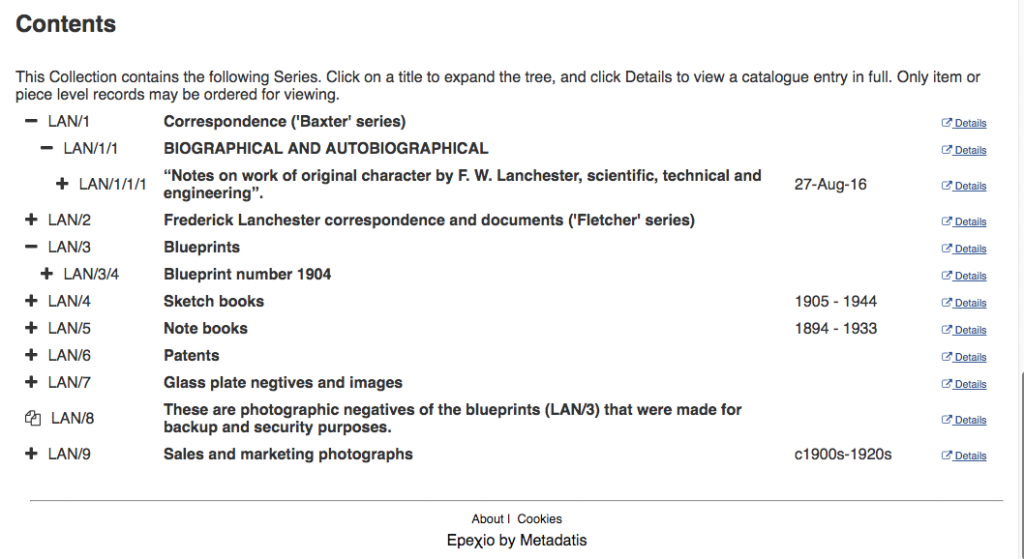The difference between archives and library material
Although the archives are based in the university library there is a difference between library and archive material. Libraries mostly collect published material (secondary sources), which is normally organised by subject, and browsing and borrowing is allowed. Archives mostly collect unpublished unique material (primary sources), which can only be viewed in dedicated reading rooms and cannot be borrowed. Secondary sources in libraries can help us understand primary sources in archives.
Archives are organised to show who created the material (rather than by subject), so catalogues reflect this, and also put material in collections into context so you can see the links between records. This means that archive catalogues are hierarchical (and have levels).
For example the Frederick Lanchester collection is at ‘collection’ level and levels below this are ‘series’ showing the different categories of material, such as correspondence, notebooks, sketchbooks, patents, blueprints, photo albums. The ‘series’ are sub-divided further where required e.g. into ‘item’ level. The diagrams below show how the levels work.
Once the structure of a collection is created, the final reference numbers for the items in that structure can be decided upon. The reference numbers help distinguish material in different collections, and also give you an idea of where in a collection structure an item sits. So the structure for a letter in the Lanchester correspondence ‘series’ would be:

The image below shows how the hierarchy in the online catalogue is displayed (and how the levels can be opened and closed by clicking on the + and – signs).

Unlisted material
We have some archive materials that have yet to be listed either on paper or digitally. Unlisted material is not usually available for research. This currently includes some of the Frederick Lanchester collection, the university’s ‘institutional’ archives, and other collections mentioned on our ‘Discover the archive collections’ page. These materials will be listed as soon as possible.
